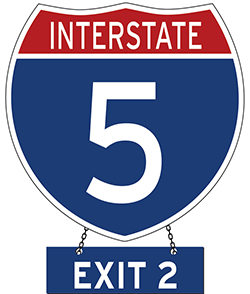 Schlepping and Schmoozing Along the Interstate 5
Schlepping and Schmoozing Along the Interstate 5
Chapter 3, Exit 2, Remnants of the Little Land Colony
Exit at San Ysidro Boulevard/ Dairy Mart Road and turn right on Dairy Mart Road; follow to Beyer Boulevard; turn right, proceed to intersection on the left with Smythe Avenue, which was named for the founder of the Little Land Colony, William Ellsworth Smythe. Continue on Beyer Blvd to Cottonwood Road on the right. Turn right at San Ysidro Boulevard and continue to 133 San Ysidro Boulevard, on the left, which was the old ranch house of the Belcher Estate, where the Little Land Colony started. To resume journey, continue on San Ysidro Blvd to Via de San Ysidro, turn right and enter I-5 north.
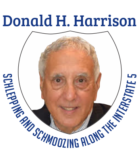 At our last stop, Jewish merchants were our focus. Another reason one can anticipate finding a “Jewish story everywhere” is the nation of Israel. Every other country in the world either enjoys or refuses relations with Israel, but whichever the case, it leads to a Jewish-interest story. On a more personal level, there are relationships between the Jews who live in the Land of Israel and people living in other areas of the world.
At our last stop, Jewish merchants were our focus. Another reason one can anticipate finding a “Jewish story everywhere” is the nation of Israel. Every other country in the world either enjoys or refuses relations with Israel, but whichever the case, it leads to a Jewish-interest story. On a more personal level, there are relationships between the Jews who live in the Land of Israel and people living in other areas of the world.
Such was the situation in 1909 when a prominent Jewish subject of Ottoman-controlled Palestine, who later would become well known to his countrymen and to students of World War I, visited San Ysidro to learn about an agricultural experiment known as the Little Landers Movement.
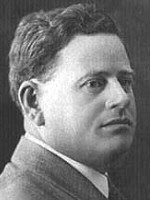
Aaron Aaronsohn (1876-1919) was then a highly-respected agronomist, credited three years before his visit to the Little Land Colony with discovering at Mount Hermon wild emmer (Triticum dicoccoides), a grain that was soon recognized as the “mother of wheat.” Weather resistant, it could grow below sea level near the Jordan River and at an altitude of 6,000 feet on Mount Hermon.
He had arrived in the settlement of Zikhron Ya’akov in 1882 as a six-year-old son of Ephraim Fischel Aaronsohn, who with his wife, was among the first 100 Romanian Jewish families to settle in that agricultural village about 20 miles south of Haifa, in the movement known as the “First Aliyah.” Zikhron Ya’akov had been founded that same year by Baron Edmond James de Rothschild, a member of the French branch of the celebrated Rothschild banking family.
Rothschild arranged for Aaronsohn at the age of 17 to study agriculture in France. After completing that program, Aaronsohn became involved in 1896 in the establishment of the city of Metulla—located in what today is the finger of Northern Israel jutting into Lebanon. Metulla was set up as a moshav, in which settlers owned their own land but sold the produce they raised cooperatively.
His discovery of emmer came while he was working for an experimental agricultural organization under the Rothschild family’s auspices and led to an invitation to visit and tour California, which has similarly varied geographical and weather conditions to Israel. After meeting with officials at the University of California at Berkeley (“Cal’) he was offered a position as chair of that university’s agriculture department, an offer that he declined.
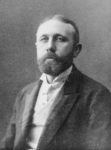
It was during that trip to California that Aaronsohn was also invited to visit the Little Land Colony, which had been organized in 1908 by newspaper columnist and irrigation expert William Ellsworth Smythe, and formally established in 1909 on a ranch owned by George Belcher. Ellsworth had been impressed by A Little Land and a Living written in 1908 by longshoremen’s union organizer and attorney Bolton Hall. The Irish-born son of a minister, Hall was a proponent of the “back-to-the-land movement.” He preached that people could escape the evils of city life by purchasing only so much land as they could cultivate themselves and through intensive farming of vegetables, fruit, and some livestock, provide not only for their sustenance, but also have surplus to sell.
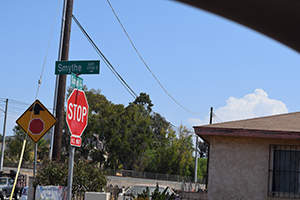
Seizing on the idea, Smythe laid out a colony featuring one- and two-acre lots, which could be purchased outright or over time by people committed to the idea. The motto of the colony was “A little land and a living surely is better than desperate struggle and wealth possibly.”
A board of directors directly elected by the colonists handled the colony’s business affairs, including the sale in San Diego of its surplus produce. The best lots were those closest to the source of ground water; the less desirable lots lay farther away and at slightly higher elevations. As Little Land Colony land values increased and people sold their property to others, the increment above the original purchase price went not to the original property owner, but rather to the colony itself, to pay for the colony’s improvements.
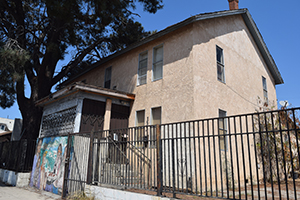
When Aaronsohn visited the colony in its infancy, he expressed support for the Little Land concept, commenting that elsewhere in America, too much acreage was going to waste.
A few years after his return to Palestine, Aaronsohn became active in the faction of Zionists who believed that the Yishuv – as the Jewish settlement was called – would be better off if Palestine came under British control rather than remaining under the control of the Ottoman Turks. Among those holding the opposite view at the time was David Ben-Gurion, who decades later would become Israel’s first prime minister.
As a recognized agricultural authority, Aaronsohn was permitted by the Turks to travel throughout the Middle East, examining plant specimens and observing the countryside. Unknown to the Turks, he also kept careful track of Ottoman military installations and movements – information that proved invaluable during World War I to Field Marshal Edmund Allenby. Aaronsohn’s service as a spy was credited as key to the capture from the Turks of Beersheba, Jaffa and Jerusalem en route to the total defeat of the Ottoman Empire.
In California, meanwhile, Smythe named the area in which his agricultural colony had grown as “San Ysidro,” a tribute in Spanish to the Catholic Saint Isidore, the Farmer (San Ysidro Labrador), who lived near Madrid, Spain in the late 11th and early 12th century. Named by his parents in honor of Saint Isidore of Seville, he toiled throughout his life as a poor farmworker. He was said by the Roman Catholic Church to have been so pious that angels were seen walking at his sides, helping him to plough. Always kind to animals, he was reported to have once emptied a large portion of wheat from his sack to feed pigeons which had been scratching on the hard ground for food without success. However, when Isidore arrived at the mill, his sack had been miraculously refilled.
The Little Land Colony had its ups and downs, with some 300 colonists at one point working their small farms. But what became known as the Hatfield Flood in 1916 destroyed half the farmsteads in the colony, a blow from which the enterprise never recovered. The months prior to 1916 had been plagued with drought. The weather was so dry that the San Diego City Council agreed to a proposition from Charles Hatfield that by seeding the clouds with a special chemical mixture, he could induce rain. He asked a fee of $10,000 from the city, to be paid only if he were successful in producing enough rain to fill the Morena Reservoir.
Rain it did, and then it continued to rain and rain. The Morena Reservoir, along with others operated by the city, overflowed. Flood water destroyed much that lay in its path. Some 30 inches of rain fell on lands unable to absorb so much moisture. Approximately 20 people were trapped and died in the raging waters. Later, Hatfield and the city wrangled over whether he should be paid for fulfilling his contract. The San Diego City Council said it would pay, only if Hatfield accepted liability for the destruction the flood had caused. Hatfield dropped his demand for compensation. San Ysidro, once a separate municipality, was annexed by the City of San Diego in 1957.
While the Little Land Colony ultimately was a failure – with only a few buildings from the early 1900s left standing to remind us of its existence, the philosophy which it had expounded — involving intensive cultivation, democratic decision making, and cooperative marketing – eventually took hold in the kibbutz and moshav movements of Israel. While they developed independently, Aaronsohn’s visit can be understood as an example of cross-fertilization.
*
Next, Sunday, January 16, 2021: Exit 3 (Tocayo Avenue): Mount Olivet Cemetery
*
This story is copyrighted (c) 2022 by Donald H. Harrison, editor emeritus of San Diego Jewish World. He may be contacted via donald.harrison@sdjewishworld.com
What impressive information and relationships between California and the Yishuv.
Thanks, Don